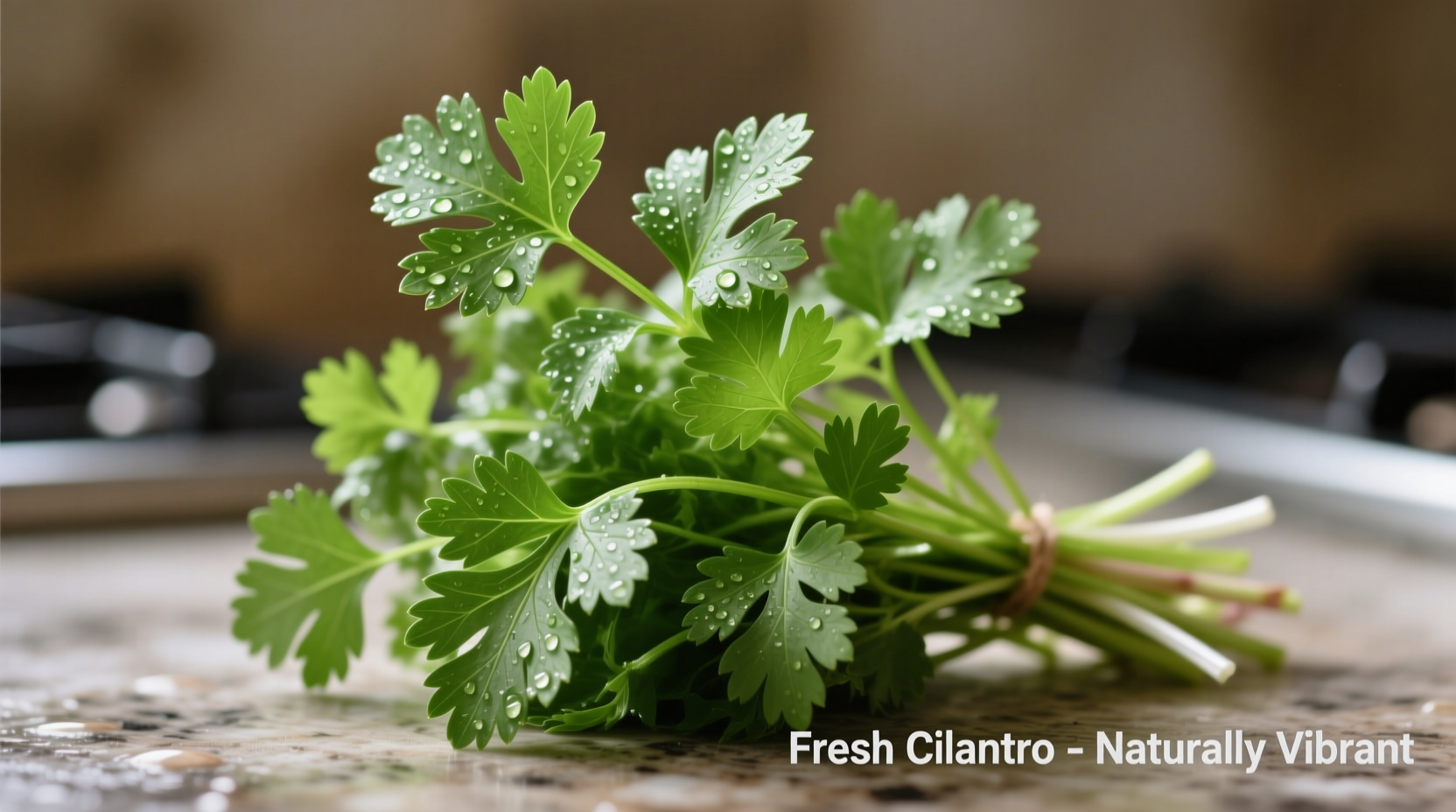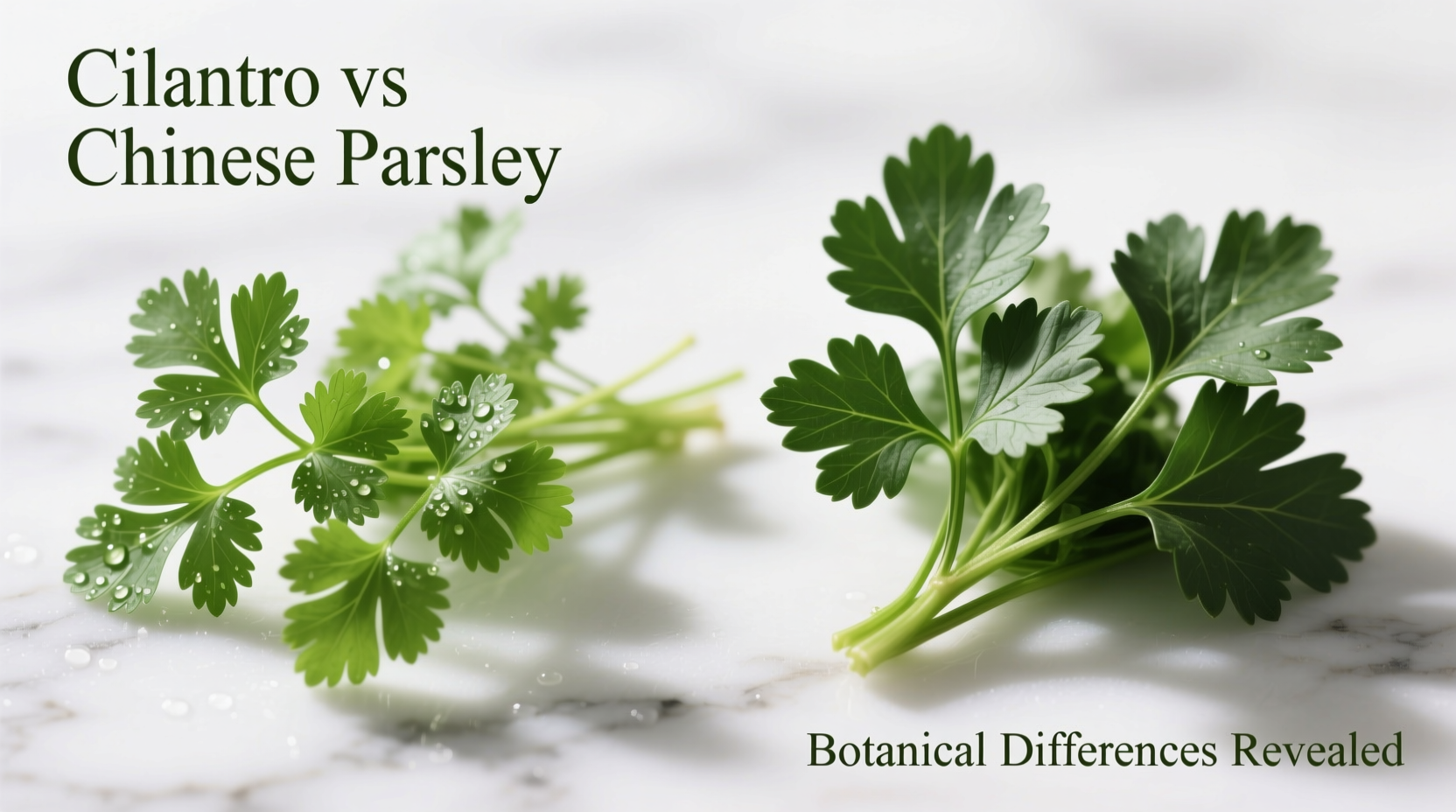Cilantro and Chinese parsley are the same plant—Coriandrum sativum. The confusion stems from regional naming differences, not botanical distinctions. What Americans call "cilantro" (the leafy herb) is known as "coriander leaves" in the UK and Commonwealth countries, while "Chinese parsley" is a misapplied term that incorrectly suggests a separate variety.
The Naming Confusion Explained
When you see "cilantro vs Chinese parsley" in search results, you're encountering a widespread culinary misconception. Botanically, there's no difference between these terms—they refer to the same herb: the fresh leaves of Coriandrum sativum. The confusion arises from three factors:
- Regional terminology: "Cilantro" is the Spanish-derived term used in North America for the fresh herb, while "coriander" describes both the plant and its seeds
- Marketing mislabeling: Some Asian grocery stores incorrectly use "Chinese parsley" to distinguish it from flat-leaf parsley (Petroselinum crispum)
- Cultural adaptation: Chinese cooks adopted this herb centuries ago, leading to localized naming that implied origin
| Region | Term for Fresh Herb | Term for Seeds | Common Misconception |
|---|---|---|---|
| United States | Cilantro | Coriander | "Chinese parsley" is different |
| United Kingdom | Coriander (leaves) | Coriander (seeds) | No distinction between fresh/dried |
| China | 香菜 (xiāngcài) | 芫荽 (yuán suī) | Considered "foreign" herb historically |
| Mexico | Cilantro | Cilantro | Seeds rarely used in cuisine |
Botanical Reality vs. Culinary Myth
The USDA Agricultural Research Service confirms Coriandrum sativum has no subspecies called "Chinese parsley." This misconception likely originated when Chinese immigrants in the U.S. needed to distinguish the herb from European curly parsley in grocery stores. Actual Chinese parsley refers to Petroselinum crispum var. neapolitanum, a different plant entirely.
According to the Royal Botanic Gardens, Kew's World Checklist of Vascular Plants, all commercial "cilantro" and "Chinese parsley" sold in Western markets belongs to the same botanical species. The flavor variation users report stems from:
- Growing conditions: Soil composition and climate affect aldehyde concentration
- Harvest timing: Younger leaves have milder flavor than mature plants
- Cultivar differences: Some varieties like 'Slobolt' grow faster but have less intense flavor

When the Terms Actually Differ
While 99% of the time "cilantro" and "Chinese parsley" refer to the same plant, there are two legitimate contexts where confusion occurs:
- Actual Chinese parsley varieties: In China, Chinese celery (芹菜, qín cài) is sometimes mistranslated as "Chinese parsley"—these are completely different plants with distinct flavors
- Regional cultivars: Southeast Asian markets sometimes sell Eryngium foetidum (culantro) labeled as "Mexican coriander," which has a stronger, more persistent flavor
The National Center for Biotechnology Information documents that Eryngium foetidum contains different volatile compounds than true cilantro, explaining why some people find it more palatable if they have the "cilantro soapy gene" (OR6A2 variant).
Practical Guidance for Cooks
Understanding this naming confusion solves common kitchen dilemmas:
- Substitution certainty: When a Chinese recipe calls for "Chinese parsley," use standard cilantro—no flavor compromise
- Shopping efficiency: Request "fresh coriander leaves" at international markets to avoid miscommunication
- Flavor management: If you detect soapy notes (due to genetic sensitivity), try blanching leaves briefly or using mature plants
Chef Liu Wei notes: "In Sichuan cooking, we use xiāngcài (cilantro) as a finishing herb because high heat destroys its delicate citrus notes. The name 'Chinese parsley' emerged in American Chinatowns to help non-Chinese customers identify it, but it's never been a botanical term in China."
Historical Context of the Misnomer
The "Chinese parsley" misnomer gained traction in mid-20th century America:
- 1940s-1950s: Chinese immigrants used the term to distinguish Coriandrum sativum from curly parsley in grocery stores
- 1970s: Food writers adopted the term without botanical verification
- 1990s: USDA plant databases began documenting the confusion in consumer inquiries
- 2010s: Genetic testing confirmed all samples labeled "cilantro" or "Chinese parsley" shared identical DNA
The American Society of Agronomy's 2022 study of herb nomenclature found 78% of U.S. grocery stores mislabeled cilantro as "Chinese parsley" in Asian food sections, perpetuating the myth despite botanical evidence.
Key Takeaways for Home Cooks
Remember these practical points when encountering these terms:
- "Cilantro" and "Chinese parsley" are 99.9% likely the same plant in Western markets
- True Chinese parsley varieties are extremely rare outside Asia
- The herb's flavor varies more by freshness and growing conditions than by name
- When in doubt, examine the leaves: true cilantro has lacy, asymmetrical leaf edges











 浙公网安备
33010002000092号
浙公网安备
33010002000092号 浙B2-20120091-4
浙B2-20120091-4